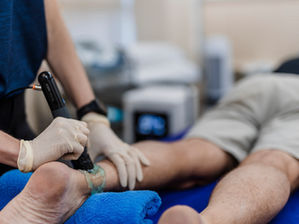The Science of Skincare
- Dec 1, 2020
- 3 min read
Updated: Jan 12, 2021

This year we have heard a lot about bugs. Well, one particular type of bug I guess, the coronavirus. (which – just saying – is real and not a population controlling conspiracy!) But I want to discuss other types of bugs that are GOOD for our health – vital in fact!
The Skin Microbiome is the name for all the organisms/bacteria that are on the surface of our skin. I read somewhere that this is one of the latest ‘trends’ in the skin industry. Well, I don’t believe that skin science can be described as a trend. This is, however, an area that scientists are discovering a lot about and how it relates to many of our skin problems.
This microbiome is a complex ecosystem that resides on the skin, develops over time and is pretty unique to each individual. Some organisms on the skin are helpful to skin function while others are pathogenic – cause problems. Balance is an important thing. New trials are currently being performed involving altering someone's unhealthy microbiome to make it healthy, by using a probiotic solution carrying organisms harvested from the skin of a person with a positive mix of bugs! Once this is perfected, it will be a game-changer for skin health. Meanwhile, what do we know about this now?
Where do we get our unique microbiome? Well, at the beginning of our life, our parents are involved. Later, the food we eat, the roommates we have, and what we subject our skin to. Variables like cleaning, UV light, general health, age, geography, stress etc. all go towards creating our skin bug colony.
Skin conditions that are significantly associated with an unbalanced microbiome include Rosacea, Eczema, Acne, Psoriasis, and Seborrhoeic and Peri-oral Dermatitis.
There are some bugs in the skin that you might be familiar with, like Staph aureus. It can be responsible for nasty infections, but small numbers of these bugs are often present on the skin without causing problems. An extra amount of this bug is often found in eczema. It can damage skin’ protective barrier.
Staph epidermidis is very common in the skin. It is helpful in small doses as it is anti-inflammatory and can protect from UV damage, and improve skin’s immune function, but large doses can still cause trouble!. It can also help to control Staph aureus.
P-acne makes up 90% of bugs on the skin, and there are different strains of this one – some that contribute to causing acne, while others fight the acne-causing variety.
So what can we do right now to try and improve our skin bugs?
Sweat! Sweating is slightly acid. Skin that is too alkaline can be dry, red, acne-prone and sensitive. The skin’s acid mantle helps provide the skin’s protective barrier. This effects which bugs want to grow there. (Of course for people with back and chest acne my advice will be different, but that’s a story for another day)
Reduce sugars, bad fats (usually found in takeaway/fast food), and, in some people, dairy. This is related to the Gut Microbiome (yes, not surprisingly, the gut has one too). If bugs in your gut are unbalanced, it can become leaky and result in inflammatory proteins entering your system and landing in your skin (the gut/skin axis). So healthy skin is another reason to eat well.
Reduce harsh or frequent cleansing.
Identify triggers. For example – food sensitivities, skincare sensitive or UV light.
Probiotics – oral and topical. Although we don’t yet have the exciting customised probiotic of the future, general skin targeting probiotics are already available (e.g. Imbibe).

























































